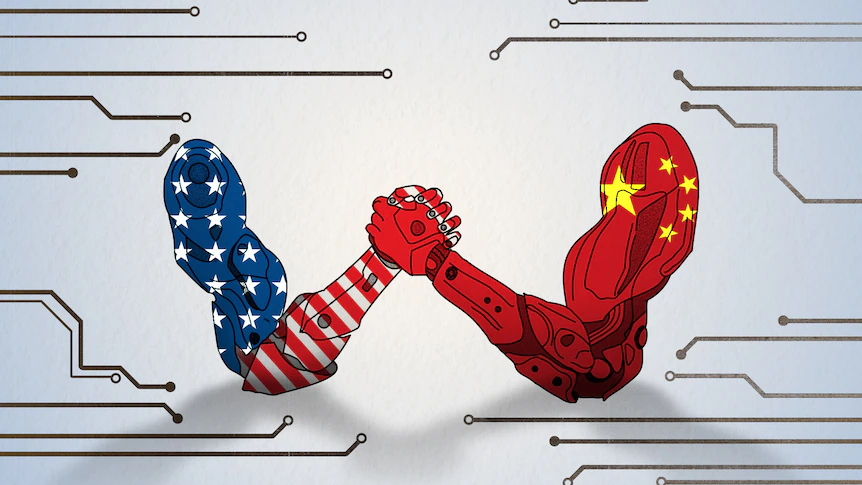Since the Trump era, the world has seen a significant deterioration of relations between the US and China. Post-COVID-19 and the Russia-Ukraine war, Chinese technological advancement and the Western narrative of the rising threat from China have been in the limelight for a long time. The subsequent trade war between the US and China and its impacts on the semiconductor industry has revealed a much more intricate web of technological competition between the two countries that has since taken the form of decoupling and de-risking economic ties. One side (USA) seeks to preserve the status quo because it places its country at the centre stage of global geopolitics, while the other side (China) seeks to change it to allow for greater economic development and political domination and shift from hegemonic singularity to bipolarity. This paper traces the US-China relations from the beginning to the current century and explores the driving factors behind the decoupling. It examines the viability of this decoupling and looks at the possible ramifications of this process, the role of Asian countries, and its impacts on technological innovation as a whole. Since the semiconductor industry is one of the key industries besides 5G and AI, the paper also analyses the role and future of the industry in a case study. Finally, the paper delves into possible future scenarios for both the US and China and the world as a whole.
Introduction
The 21st century is the era of increasing reliance on technology. In the words of Eric Schmidt, “Technology is the engine that powers superpowers”. The US has historically been a hegemon post World War 2. Following the end of the Cold War, no country could hold light to America’s technological innovation that powered not just its military but also its economic stronghold over the Globe. There existed an “American Dream” as it was popularly known back then because there was an arena of endless opportunities in the US.
In the subsequent years, the world saw an era of globalisation or a “world without borders”. Increased cooperation in areas of science and technology propelled new players into the international arena, the most significant of which was China. The Asian giant offered massive economic opportunities for American firms seeking to maximise profits. They had access to cheap labour and a myriad of untapped resources. While both countries benefited from establishing deeply intertwined global technology supply chains, China had a relatively greater advantage in terms of shrinking its gap to the US GDP.
By the time the US saw China as a threat, the country had already become a nuclear power, too dominant in the global economy for the US to eliminate the competition actively. This technological growth of China that powered its rise as a global economy also translated into multiple initiatives like the BRI and military aggression in the South China Sea over disputed territories.
The BRI (Belt and Road Initiative) aimed at developing new trade routes in the regions of Africa, Latin America and South Asia. The US however sees this as an attempt by Chinese authorities to establish dominance within the regions by exploiting unstable political, social and economic conditions. This has enabled America to label the initiative as a “debt-trap policy”, alleging that China’s status as a lender allowed it to secure access to crucial resources to propel its economy forward. Military aggression, on the other hand, has manifested as escalating air incursions over Taiwan, deployment of sophisticated military technology in the Indo-Pacific area and increased suppression of rebellions in Hong Kong to facilitate its integration with Mainland China.
Technological decoupling or derisking started back in 2008 under the Obama administration. This essentially implied reducing dependence on China or de-tangling the globalised network from China, to reduce the country’s pre-eminence in the global arena. The process was not as aggressive as it is now, nor was there the existence of new players like India on the horizon. In recent years, starting with the Trump administration, the changing geo-political landscape has had a considerable role in technological collaborations. Coupled with increasing concerns regarding national security, not just on the part of the US but also on multiple other actors like India and the EU, there has been a gradual distancing from ties with China.
This paper thus delves into the historical context of US-China relations, the role of decoupling and de-risking in technological competition and the strategies adopted by both countries to protect their concerns. The main aim of the paper is to analyse the implications of decoupling and de-risking from China and the role of the global south in this regard. Lastly, this paper emphasises the need for policy synergy and cooperation between the two countries in order to secure global supply chains.
Click Here To Download The Paper


📌Analysis of Bills and Acts
📌 Summary of Reports from Government Agencies
📌 Analysis of Election Manifestos

